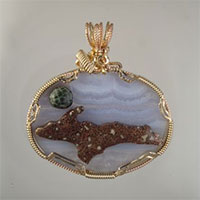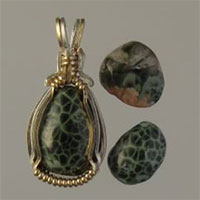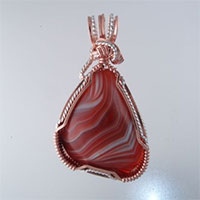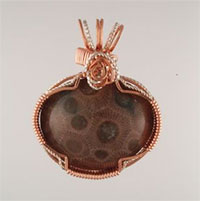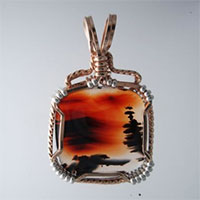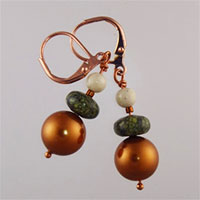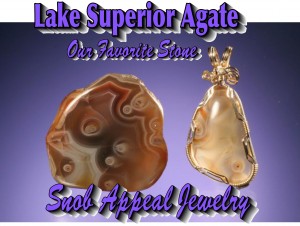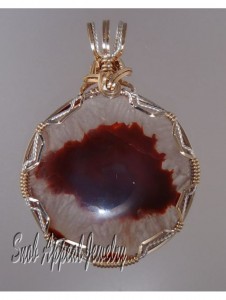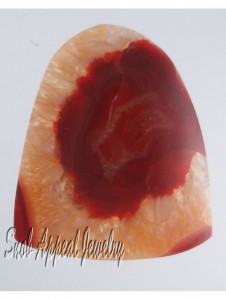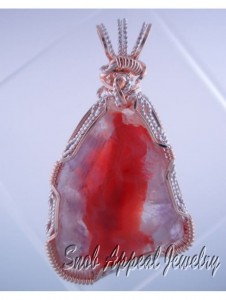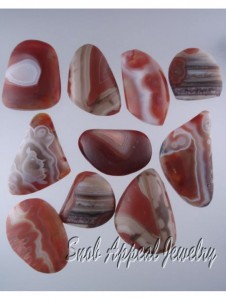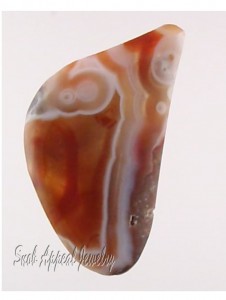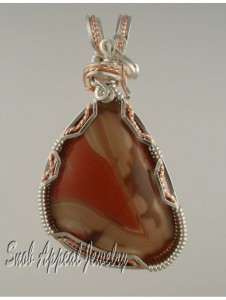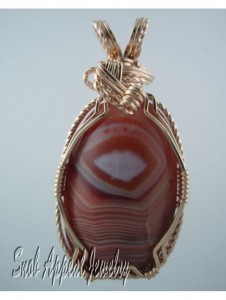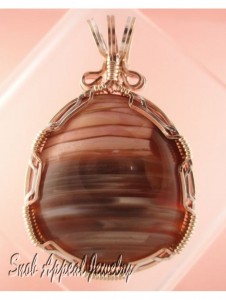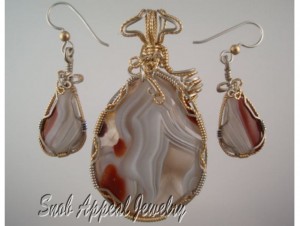Everyone claims that certain types of agates are the most colorful, interesting, and rare, but few agates come close to Lake Superior Agates for variety and coloration. As far as rarity; yes some LSA’s are very rare. Lake Superior Agates are also my favorite stone.
This blog highlights some of the best Lake Superior Agates I’ve made into jewelry over the last 10 years. If the agate is still for sale, we have hooked a link from the picture to out website. Many are long gone, but maybe you’ll get lucky.
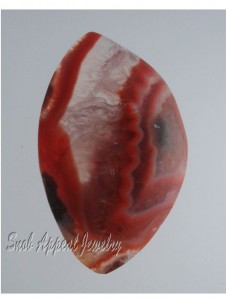
An amazing Laker
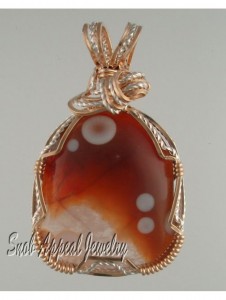
Floating eyes are usually at or near the agate's surface. Careful cutting preserves them.
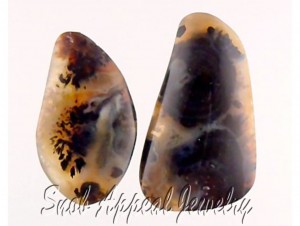
Proof that Lakers can resemble other Agates. This one apes a Montana Moss Agate, but was found buried in a Minnesota gravel pit.
I purchase most of my Lakers rough. Most good stuff comes from gravel pits in Minnesota, and I have no access to these sites. I also use flawless or nearly flawless Lake Superior Agates in my jewelry, and believe me, with the beating Lakers took, the good majority are cracked. The agates in the Minnesota Gravel Pits were carried as glacial till from the Lake Superior area via many glaciers that pushed into this area, than receded, leaving glacial till in their wake. We now call this glacial till gravel. These glaciers pushed Lake Superior Agates as far south as Kansas. You see glacial evidence today as large rounded boulders left scattered randomly about.
Lake Superior Agates were formed in Amygdaloidal Basalt. This was bubbly basalt and the gas bubbles floated to the surface, and those that did not escape before the basalt cooled remained vacant. The bubbles are called vesicles and as the bubbles rose they became smaller and more numerous. The basalt, as it cooled, shrunk and cracked allowing silica and other minerals to enter through these cracks and fill the bubbles (vesicles). There are many theories as to how agates form in vesicles, sometimes totally opposite of other theories. I’ll let the researchers discuss these theories, my interest is in the colors and patterns that make wonderful agate jewelry! The Lake Superior area was ripe with iron, and it was common for iron to mix with the silica producing the red colors as iron oxide formed. The classic red and white Laker is referred to as a “Candy Striper”, and cannot be mistaken for any other type of agate. Sometimes Lakers can be white or clear and show a ghost banding, or the core of the agate can be just Quartz. One theory says that minerals that colored the agates ran out and whatever space was left was filled with plain Silica.
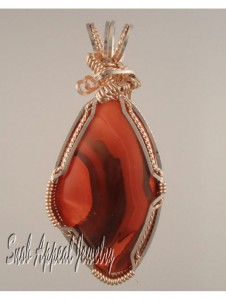
A classic Paint Agate
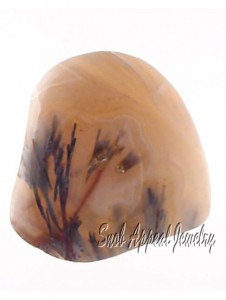
Sagenite Lakers contain metallic inclusions, usually Rutile. This makes them look like plant material is present.
I could talk Lake
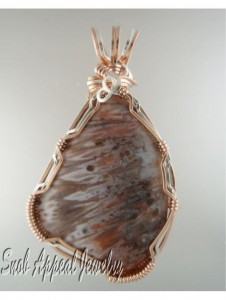
An unusual Sagenite Agate.
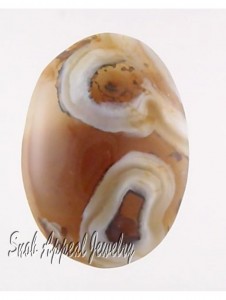
I was very stumped on this Laker. After consulting agate expert John Marshall it was determined that this is basically and unclassifiable Laker.
Superior Agates all day, but in this blog I want to just show you some different LSA types. You can scratch your heads as to how exactly these formed. I don’t fret about how agates are formed; I just cut, polish, and make jewelry from them. If you follow links to my jewelry pages you will see that I have over 50 pendants online and many more in my art show collection. It is fascinating to see how different each stone can be. The more I work with them, the more I enjoy Lake Superior Agates and the variations we find in them. The variety of types, and combinations of colors and patterns make Lakers the most remarkable of members of the Quartz Family.
Come visit us at the 2016 Agate Expo, July 7-9, 2016 in Cedarburg, Wisconsin. www.AgateExpos.com


